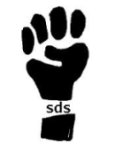Agorism Contra Marxism, part 3
 [This continues a multi-part summary of known existing portions of Samuel Edward Konkin III’s unfinished book Agorism Contra Marxism, which began, and ended, its serialization in Strategy of the New Libertarian Alliance #2, 1982-83.]
[This continues a multi-part summary of known existing portions of Samuel Edward Konkin III’s unfinished book Agorism Contra Marxism, which began, and ended, its serialization in Strategy of the New Libertarian Alliance #2, 1982-83.]“Agorism and Marxism,” wrote SEK3, “agree on the following premise: human society can be divided into at least two classes; one class is characterized by its control of the State and its extraction of unearned wealth from the other class. Furthermore, agorists and Marxists will often point to the same people as members of the overclass and underclass, especially agreeing on what each considers the most blatant cases. The differences arise as one moves to the middle of the social pyramid.
“Agorists and Marxists perceive a class struggle which must continue until a climactic event which will resolve the conflict. Both sides perceive select groups which will lead the victims against their oppressors. The Marxists call these groups of high class consciousness ‘vanguards’ and then extract even more aware elements designated ‘elites of the vanguard.’ Agorists perceive a spectrum of consciousness amongst the victims as well, and also perceive the most aware elements as the first recruits for the revolutionary cadre. With the exception of ‘intellectuals,’ the Marxists and agorists sharply disagree on who these most progressive elements are.”
Precursors to Marxist Class Theory
Although today’s academics largely credit the doctrine of class conflict to Marx and Engels, historian Ralph Raico has for many years advanced the 19th Century classical liberal exploitation theory of Comte and Dunoyer as a much superior, more correct precursor to the Marxist class model. However, Konkin begins his examination of class theories much earlier than Comte-Dunoyer or Marx.
“
Enter Comte, Dunoyer, and the rest of the “French school.” But we will get to libertarian (and agorist) class theory later.
First...Karl Marx.
To be continued...
-----
Technorati Tags: New Libertarian, Movement of the Libertarian Left













3 Comments:
Dentist Tarzana, Encino,Woodland Hills, Irvine,Implant,Braces
Encino tooth removal
Good write-up, I’m normal visitor of one’s blog, maintain up the excellent operate, and It is going to be a regular visitor for a long time. “There is a time for departure even when there’s no certain place to go.” by Tennessee Williams….
Regards
buy facebook fans
I just wanted to leave a comment to say that I enjoy your blog. Looking at the number of comments, I see others feel the same way! Congratulations on a very popular blog.
Car finance loan
Post a Comment
<< Home